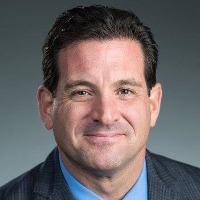CPAs are often experts in the finer points of tax law – however, when it comes to retirement planning, there is sometimes a gap in how a tax plan should integrate a lifelong investment plan. All those years of diligent saving can be quickly undone not by choosing the wrong assets but rather by not taking advantage of the numerous IRS regulations that allow you to keep taxes low. In this article, we examine some of the more typical and consequential missteps CPAs can make in retirement and how to sidestep them.
1. Only Contributing Pre-Tax Dollars to IRA and 401(K)
Those years of deducting your retirement plan contributions will eventually catch up to you, and their sting will be worse if those are the only kinds of funds you have at your disposal, as you will end up paying taxes on all of your contributions and all of your earnings. Once Required Minimum Distributions come into play, avoiding the tax burden you’ve incurred will be difficult, and your distributions may even push you into a higher tax bracket.
Instead, a mix of pre-tax and post-tax retirement plan contributions will lend themselves to greater withdrawal and tax flexibility in retirement. While every financial situation is unique, there are some general scenarios to help illustrate the point. For example, you can wind down your traditional retirement accounts first to reduce the tax impact of RMDs and let your Roth funds continue to grow.
Alternatively, you might withdraw the maximum possible amount from your taxable traditional account without pushing you over the tax bracket threshold and withdraw whatever else you need from your Roth account.
Whatever the case, by having a mix of funds with varying tax statuses, you’ll be able to alter your withdrawal strategy as needed. Without any tax-free Roth funds, you’ll have much less flexibility. Also, look into other potential tax-free sources of income, such as cash-value life insurance, that could provide needed cash flow in years you’d rather not withdraw from your savings accounts, such as a high-income year while in a market downturn.
2. Being Unprepared for Required Minimum Distributions (RMDs)
As we mentioned above, RMDs can affect your taxable income. However, they can also affect your investment plan. If your portfolio isn’t strategically balanced and prepared for RMDs, you might be forced to sell off assets from your Traditional retirement accounts in a way that could disrupt your intended asset allocation. For example, many investors keep assets that incur capital gains in brokerage accounts and low-risk bonds in retirement accounts.
However, at your RMD age, you might not be ready to part with your bonds, and offloading them could lead to overexposure to the stock market via your brokerage accounts, where you may be holding your assets that incur capital gains taxes. To make up for it, you may find yourself selling the bonds in your IRA and repurchasing them in a brokerage account to maintain your desired allocation or selling assets in your brokerage account to get back into alignment, leading to further tax obligations.
Also, as we age, our memories begin to falter, and many seniors forget to withdraw an RMD, leading to hefty penalties.
The portion of your RMD you fail to withdraw will face a 25% penalty. If you correct your mistake within two years, you can potentially reduce the penalty to 10%. Still, a 10% penalty on your already taxed withdrawals can significantly impact your retirement income, and surely you need those funds more than the IRS does!
3. Inefficient Charitable Giving Strategies
Many retirees incorporate charitable giving into their retirement plans, not just for philanthropic or legacy reasons but also for tax benefits. A common error, though, is how they make these donations: selling an asset or assets, receiving a Required Minimum Distribution, withdrawing the proceeds, paying taxes on this withdrawal, then donating the net amount, and finally claiming a tax deduction for the donation.
A more tax-efficient approach could be executing a Qualified Charitable Distribution (QCD) directly from a Traditional IRA or 401(K) to the charity. Instead of selling an asset and then taking an RMD, you can directly transfer the proceeds from the retirement account to the charity of your choice. Since the funds never hit your non-retirement account and you never personally see a profit, you don’t owe any taxes. A QCD can also help satisfy RMD requirements, depending on its size. In 2024, Americans can donate up to $105,000 through QCDs.
4. Overlooking Taxation on Social Security Benefits
A common oversight, even among some CPAs, is failing to account for the taxation of Social Security benefits. Yes, these benefits are subject to tax, with the amount taxed depending mainly on your ‘combined income.’
Your combined income is calculated by adding your adjusted gross income (AGI), any tax-exempt interest income, and half of your Social Security benefits. Notably, your AGI includes taxable income from retirement plans.
For individuals, if your combined income is between $25,000 and $34,000, up to 50% of your Social Security benefits may be taxed. Should your income exceed $34,000, you could see up to 85% of your benefits subject to taxation. For married couples filing jointly, these thresholds are slightly higher: between $32,000 and $44,000, 50% of your benefits are taxable, and if your combined income is over $44,000, up to 85% can be taxed.
It’s important to clarify that an 85% tax rate does not mean you will pay 85% of your Social Security benefits in taxes. Instead, it means up to 85% of your benefits can be counted as taxable income, which will then be taxed according to your current tax bracket.
This is why Roth distributions and other sources of tax-free income are important, as they don’t affect your AGI and, consequently, do not affect the taxation of your Social Security benefits. Having a substantial portion of tax-free income in retirement can be a critical strategy to offset the tax implications on other income sources.
5. Navigating Capital Gains Taxation Efficiently
Investors are sometimes caught unaware by the negative tax implications of capital gains. Confusion can arise by not understanding the difference between short-term and long-term capital gains, unexpected mutual fund distributions, and failing to offset gains with losses.
To reduce your capital gains tax liability, consider offsetting part of your gains with losses as part of a portfolio rebalancing strategy. Additionally, employing tax-gain harvesting – selling appreciated assets while in a lower tax bracket to reduce the tax impact – can potentially be a tax-savvy move.
Also, it’s important to manage your regular brokerage accounts in conjunction with your tax-advantaged retirement accounts to help keep taxes as low as possible. A move executed blindly in one account can significantly affect your other accounts.
Final Thoughts
Preparing for retirement is a lot more than just diligently saving or choosing the right assets to invest in. It’s equally about taking advantage of tax strategies where even the most savvy savers, including CPAs, might stumble, such as balancing pre-tax and post-tax contributions, preparing for RMDs, optimizing charitable giving and Social Security, and managing capital gains.
To ensure you maximize your retirement savings, we recommend sitting down with a financial professional attuned to CPAs’ unique needs and expectations. CPA Retirement Solutions can provide the education and strategies required to keep your retirement savings on the most efficient tax track possible.
Click the button below to schedule a consultation and start optimizing your retirement plan today!










